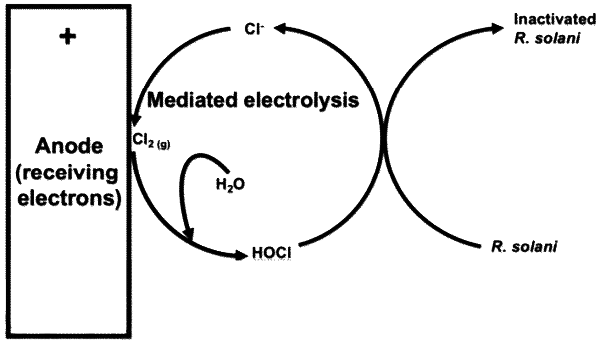| CPC C02F 1/4674 (2013.01) [A01C 23/042 (2013.01); C02F 1/46109 (2013.01); C02F 2001/46142 (2013.01); C02F 2201/4614 (2013.01); C02F 2201/46145 (2013.01); C02F 2209/06 (2013.01); C02F 2303/04 (2013.01)] | 18 Claims |

|
1. An electrochemical method for the treatment of fertigation water, comprising:
flowing fertigation water through an electrochemical cell to effect regenerative mediate electrolysis, the electrochemical cell comprising at least one anode and at least one complementary cathode while simultaneously adjusting one or more of current density, flow rate and pH, wherein the at least one anode is a dimensionally stable ruthenium dioxide anode,
wherein said flowing of said fertigation water continuously regenerates a disinfection agent to control presence of a pathogen in said fertigation water while maintaining nutrient levels; and
collecting effluent treated fertigation water, wherein the disinfection agent comprises free chlorine at concentrations that remains below phytotoxic thresholds of about 2.5 mg/L for irrigating crops.
|